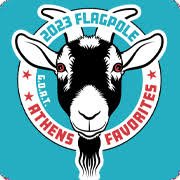Re-membering
/Re-membering
By Laura Glenn
The common use of the word “remember” is to think about people, events, or places of our past; through our memories we are transported to a former time. As crucial as remembering our past is, I would like to also advocate for a more present tense sense of the word. Ironically, to introduce this concept, I will share a memory of a former teacher who inspired me to think of remembering in a different way.
Peggy Hackney, dancer and movement therapy teacher extraordinaire, invited her students to think about our bodies by re-membering them: that is, bringing all the parts (“members”) of our body into our consciousness again (“re”). When we are born, there is an intrinsic wholeness to our beings. Just watch a baby breathe and see how every part expands and contracts as she inhales and exhales. Over time, experiences, traumas, and our differentiating consciousness cause us to think of the individual parts of our bodies as separate entities - and usually, we only think about them when there is pain or stiffness.
Creating a practice of whole body awareness can do wonders to increase our ease within ourselves. When we receive bodywork, the practitioner helps us to bring the different parts that we have been holding or restricting movement and fluid flow to back to our awareness. Bodywork is most successful when we stay present and really feel the sensations in order to re-embody or remember these neglected or overused/overstrained areas.
In addition, any of the movement arts (yoga, pilates, Tai Chi, Yamuna body rolling, dance/movment therapy -just to name a few we have available here at Thrive) help us re-member all of the parts of ourselves. But, even if we can not attend a class, we can take 5-10 minutes each day to do a re-membering meditation.
Re-membering Meditation:
Lying on your back on the floor in an X shape (or bed or sitting in a chair or standing!) Position doesn’t matter, just your intent. Adapt as necessary.
Close your eyes and re-member your breath. Inhale and slightly internally rotate your legs and arms - or just feel the intent of the rotating. Exhale and externally rotate. Imagine all parts of your self moving to the center around your naval as you inhale. All energy moves outward distally as you exhale. Continue for as long as you need.
Begin to wiggle your toes of one foot. Using your hands to massage the toes, jiggle each joint. Move to the tendons of the foot. Rotate the ankle. Massage sore points on bottom of foot. Move the foot and ankle as many ways as is possible. Grip the lower leg and give some compression squeezes up to the knee. Move the knee joint. Use compression on the upper leg. Repeat with other foot and leg.
Place hands on top of pelvis. Do a few gentle curl-ups making sure the naval is pulled into the spine. Rub the belly in a clock-wise position. Cross arms over chest with fingers aiming towards floor. Raise the head allowing the area between shoulder blades to press into the floor.
Gently tap on chest, moving from the sternum outward. Move all the joints of the fingers and hands, wrist, and elbow. Shrug the shoulders a few times. Massage neck, scalp, face, jaw, and ears.
Turning over on belly or standing. Extend the upper back (cobra pose) by bringing chest off floor Or if standing, extend backward, making sure you do not crunch into lower back. Rub low back.
Squeeze buttocks. Push back into child’s pose. Roll back onto feet into squatting position. Lean head forward and slowly roll through each vertebra up to standing.
Roll down: let the head be heavy and let its weight pull you forward into a forward bend. Clasp your hands around each upper thigh and hamstring and compress all the way down to the ankle. Repeat other leg. Slowly roll up.
Stand and feel your breath once more - the inhalation moving into your core and filling all parts of your lungs. The exhalation streams outward toward the distal ends of fingers and toes and beyond. In your mind’s eye, try to “see” the breath moving through all parts of the body.
By honoring all the parts and bringing them into awareness, we can be more fully embodied and feel more ease.
This meditation is just the beginning. As we remember and incorporate consciously feeling even more parts of ourselves - our organs, energetic pulses, cranial rhythm, specific muscles, fascial connections- we can gain even a greater understanding of ourselves and better health.
Look for upcoming movement meditation workshops at Thrive in which we will be exploring our amazing bodies through experiential anatomy and somatic movement. And no worries- no former dance or movement experience necessary.
Be well and re-member yourself!















